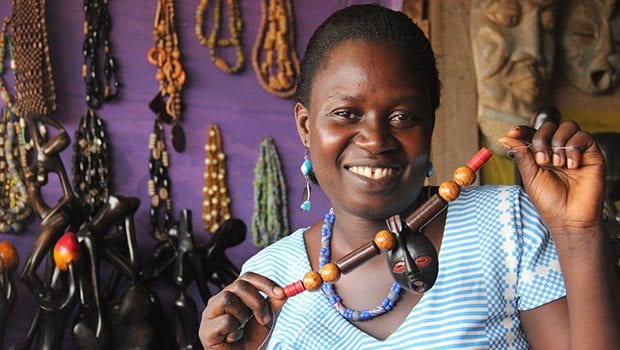Kiva lending program brings microloan approach to US
Online Zip loans aid small businesses

Kiva, a nonprofit lending organization, has helped connect entrepreneurs all over the world with $670 million in loans since it began its efforts in Africa a decade ago. Now, with more than 1.2 million lenders and money sent to 86 different countries, Kiva has set its sights on helping U.S. startup entrepreneurs with its Kiva Zip program.
The San Francisco-based Kiva was an early pacesetter in the microfinance industry. Using the Internet to harness a network of lenders that donate as little as $25 toward helping entrepreneurs in developing countries — and volunteers around the world to find worthy projects — Kiva created a network of social capital that has had widespread impact.
Lenders can search Kiva’s website for projects to back, and then contribute immediately online. Loans are then given out through lending partners all over the world. Kiva handles sending the money to the lending partners and also handles the repayment of the loan back to the individual lenders. There is no interest on the loans or any fees, and those who lend simply get their money back with the knowledge that they have helped a small business entrepreneur get off the ground. The organization, funded through grants, corporate sponsors and also donations, boasts a 99 percent repayment rate on its loans.
Many of the loans go to agriculture-related businesses, ranging from loans that help single farmers purchase tools or supplies to larger loans for livestock and equipment. Also popular are food businesses that need inventory to start or grow, as well as initiatives to build housing or support education. Most of the loans are a few thousand dollars or less.
Kiva spokesman Jason Riggs says the success of the Kiva model abroad sparked efforts to take a look at how the organization could support U.S. startup entrepreneurs.

Author: Photo courtesy of KivaKiva commonly provides loans to small farmers in Third World countries, such as these women farmers in Kenya.
In 2011, Kiva began loaning in the U.S. using its standard model. However, Kiva saw an opportunity to streamline the process from what was necessary in other countries — using the robust U.S. electronic payment industry to get the money directly to entrepreneurs without needing a lending partner go-between.
So the organization established the Kiva Zip program in 2012 and targeted it at businesses looking for loans under $50,000 because those small loans are not typically possible through traditional lenders, such as banks.
Riggs said the Kiva Zip program is aimed to help boost a small business economy that has been severely hampered by the credit freeze of 2008, which has not thawed for most small businesses.
“Basically, what we are doing is an experiment in social underwriting, and if successful it could really transform how small businesses access capital,” he added. “We are making lending more efficient to be able to offer zero percent no-fee loans and we are creating a new system for qualifying for loans, at the same time, which will help open up capital for a lot of people that have been excluded.”
Kiva Zip requires a “trustee” to vouch for an entrepreneur before a loan is made. Trustees are described as business support organizations, community groups or individuals that have a track record of supporting entrepreneurship and local job growth. The hope is to reduce the risk on the small business loans and provide some validity to Kiva lenders. Once a trustee vouches for an entrepreneur, the loan requests can be posted online and begin to draw funding from Kiva’s massive network of lenders.
Kiva Zip loans mostly are in the $5,000 to $10,000 range. The largest amount lent through the program was $50,000. As in the developing world, farming and agriculture are popular small business ventures taking part in Kiva Zip, but the small businesses range from coffee shops and bakeries to fashion retail shops to beauty salons.
To help promote Kiva Zip, Kiva has rolled out about a dozen city launches in cities including New York, Pittsburgh and Louisville.
There has not been an official launch in Boston, but several area businesses have successfully taken part in the program.
The Somerville-based Boston TechCollective, a worker-owned cooperative offering tech support and computer services to the Greater Boston area, used the Kiva Zip program to borrow $5,000 and add a part-time employee to help grow the business.
Boston TechCollective founder Charlie Hoover had nothing but good things to say about his company’s experience with the Kiva Zip loan process. The loan request was fully funded 48 hours after it was posted online last summer. The company had a check a week or two later.
The part-time employee they hired with the loan quickly generated enough revenue to be hired as a fulltime employee.
According to Hoover, one of the great things about Kiva Zip is how the program organizes the lending and the repayment, allowing him to focus on growing his business and not having to worry about how the money is returned to lenders.
“It does all that for you so you can focus on using the money the way you intended to use it,” he said. “It has been a very good experience.”

Author: Krista PhotographyKrista Photography owner Krista Guenin
Krista Guenin used Kiva Zip to get a $5,000 loan to rebrand her 13-year-old Woburn-based photography business and update the company website with the aim to reach more customers.
She raised her money over about a month last May.
The no-interest loan turned out to be critical for her rebranding process. She hasn’t felt much of a bump in business yet. She has already paid off half the loan but expects to pay off the rest more easily if the rebranding efforts increase her business.
She said she has been most impressed by the “ring of support” the Kiva Zip program has given her business.
“It is encouraging to see there are people out there that are thinking about me and my business and are encouraged to see the results,” Guenin said.
The Kiva Zip program is still gaining ground in the U.S., with only about 50 or so loan requests currently up and running. Kiva Zip has been launched in Kenya as well, and has about 30 loan requests there.
Kiva is using the two countries as the proving ground for the program.
“We want to really get the model nailed down in these two countries and hope to expand it over time,” Kiva’s Riggs said.






